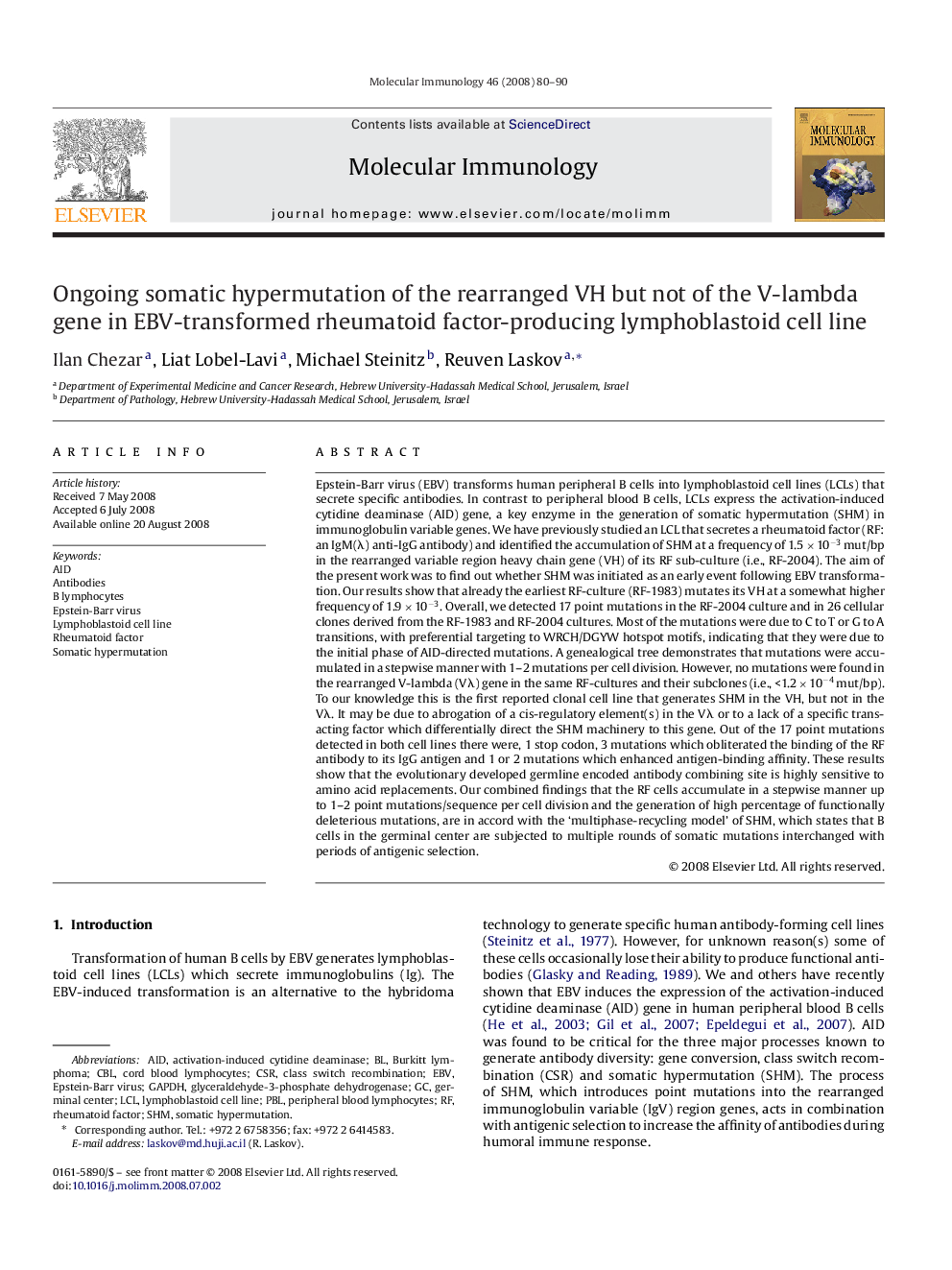| Article ID | Journal | Published Year | Pages | File Type |
|---|---|---|---|---|
| 2832722 | Molecular Immunology | 2008 | 11 Pages |
Epstein-Barr virus (EBV) transforms human peripheral B cells into lymphoblastoid cell lines (LCLs) that secrete specific antibodies. In contrast to peripheral blood B cells, LCLs express the activation-induced cytidine deaminase (AID) gene, a key enzyme in the generation of somatic hypermutation (SHM) in immunoglobulin variable genes. We have previously studied an LCL that secretes a rheumatoid factor (RF: an IgM(λ) anti-IgG antibody) and identified the accumulation of SHM at a frequency of 1.5 × 10−3 mut/bp in the rearranged variable region heavy chain gene (VH) of its RF sub-culture (i.e., RF-2004). The aim of the present work was to find out whether SHM was initiated as an early event following EBV transformation. Our results show that already the earliest RF-culture (RF-1983) mutates its VH at a somewhat higher frequency of 1.9 × 10−3. Overall, we detected 17 point mutations in the RF-2004 culture and in 26 cellular clones derived from the RF-1983 and RF-2004 cultures. Most of the mutations were due to C to T or G to A transitions, with preferential targeting to WRCH/DGYW hotspot motifs, indicating that they were due to the initial phase of AID-directed mutations. A genealogical tree demonstrates that mutations were accumulated in a stepwise manner with 1–2 mutations per cell division. However, no mutations were found in the rearranged V-lambda (Vλ) gene in the same RF-cultures and their subclones (i.e., <1.2 × 10−4 mut/bp). To our knowledge this is the first reported clonal cell line that generates SHM in the VH, but not in the Vλ. It may be due to abrogation of a cis-regulatory element(s) in the Vλ or to a lack of a specific trans-acting factor which differentially direct the SHM machinery to this gene. Out of the 17 point mutations detected in both cell lines there were, 1 stop codon, 3 mutations which obliterated the binding of the RF antibody to its IgG antigen and 1 or 2 mutations which enhanced antigen-binding affinity. These results show that the evolutionary developed germline encoded antibody combining site is highly sensitive to amino acid replacements. Our combined findings that the RF cells accumulate in a stepwise manner up to 1–2 point mutations/sequence per cell division and the generation of high percentage of functionally deleterious mutations, are in accord with the ‘multiphase-recycling model’ of SHM, which states that B cells in the germinal center are subjected to multiple rounds of somatic mutations interchanged with periods of antigenic selection.
